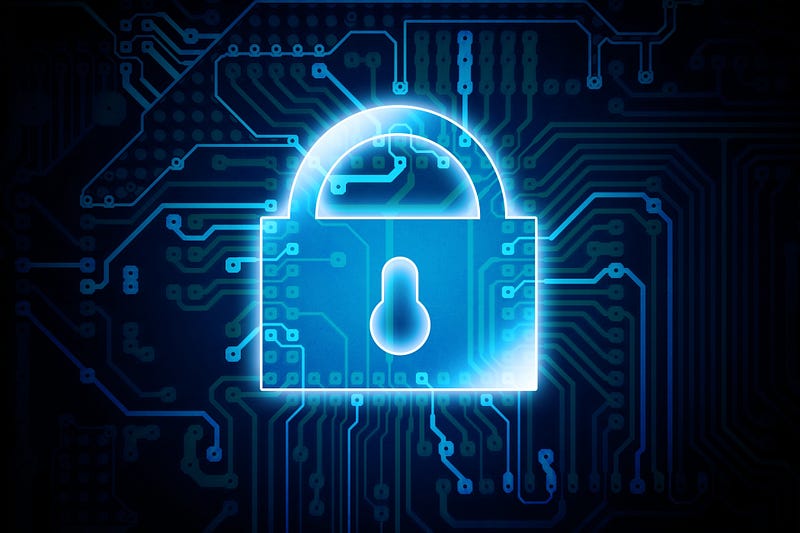Finding the Roots: How we Keep Our Information Safe Online
By Drew Bodmer, Physics and Computer Science, 2022

From military movements to secret lovers, people have always needed ways to pass secret messages. This art of encoding messages to keep them safe from prying eyes is called cryptography. The first known example of cryptography was created in ancient Mesopotamia over 3,500 years ago by a scribe who wanted to protect a secret formula for pottery glaze. In ancient Sparta, messages were written on a thin strip of paper, and only once the paper was wound around a scroll of a specific size could the message be deciphered. The most famous example of ancient cryptography is called the Caesar cipher, which was created by the Romans. The Caesar cipher works by shifting each letter in the alphabet down by a pre-chosen number. For example, if a Roman legatus wanted to send a message back to the capital, he would write a message, and then shift each letter by the number he had previously discussed with someone back in Rome. If the number was 4, a message saying “the barbarians have retreated” would become “xli fevfevmerw lezi vixviexih.” As long as the enemy doesn’t know the secret number, they will have trouble deciphering your message.
As technology advanced, so too did cryptography. During World War II, The Enigma machine was used by the Axis powers to keep the Allies from intercepting their messages. This machine used a series of rotating dials to create an ever-changing cipher that was widely considered impossible to break. Only the development of computers enabled the code to be broken — a huge breakthrough for the Allies that saved millions of lives.
While standard encryption uses the same key to encrypt and decrypt a message, asymmetric encryption uses two different keys. Each key can only decrypt a message that was encrypted by the other key. In RSA, one of the keys is made public while the other is kept secret.
Today computers mostly use something called 1024-bit RSA encryption. RSA (named after Rivest, Shamir, and Adleman, the inventors) is a genius solution to two obstacles in modern cryptography. One problem is that with encryption over the internet, there is no way to send the key securely to your intended recipient. RSA solves this problem using asymmetric encryption. While standard encryption uses the same key to encrypt and decrypt a message, asymmetric encryption uses two different keys. Each key can only decrypt a message that was encrypted by the other key. In RSA, one of the keys is made public while the other is kept secret. This public key can be used by anyone to encrypt a message, but once encrypted this message can only be decrypted by the holder of the secret key. If two people want to communicate securely, they can use each others’ public keys to do so. This is a groundbreaking way to keep information secure online because two people who want to communicate no longer have to find a way to safely transfer a code beforehand.
Because RSA involves a lot of calculations to create and uses a lot of storage, it is commonly used to establish a secure connection so that another key can be traded and used without fear of someone intercepting the new key.
The other issue with modern encryption is that computers have become fast enough to brute-force keys; they try all possible codes until one works. This is dangerous for asymmetric encryption because RSA gets around this problem by using a weakness in computers; their inability to factor large numbers. An RSA key is created by taking the product of two very large primes.
With the Caesar cipher, the Roman general would first have to agree beforehand on a specific number of letters to shift the message, but with RSA the creator of the keys simply has to post one of them online to allow anyone to send them a message that only they can read. Because RSA involves a lot of calculations to create and uses a lot of storage, it is commonly used to establish a secure connection so that another key can be traded and used without fear of someone intercepting the new key.
Since its invention, RSA has slowly become less secure.
Since its invention, RSA has slowly become less secure. 1024-bit RSA keys have been the standard since their inception, but with the massive increases in processing power they are slowly becoming crackable. For important communications, many governments and corporations have begun using 2048-bit keys, which are exponentially harder to crack by brute-force.
Even these massive keys may become obsolete in the near future with the development of non-conventional computers. A new type of computers that use subatomic particles, called quantum computers, could render RSA encryption obsolete. Quantum computers will likely quickly surpass conventional computers in many areas, including cryptography. Soon all our internet traffic, from banking to personal emails, could potentially be open to the public.
